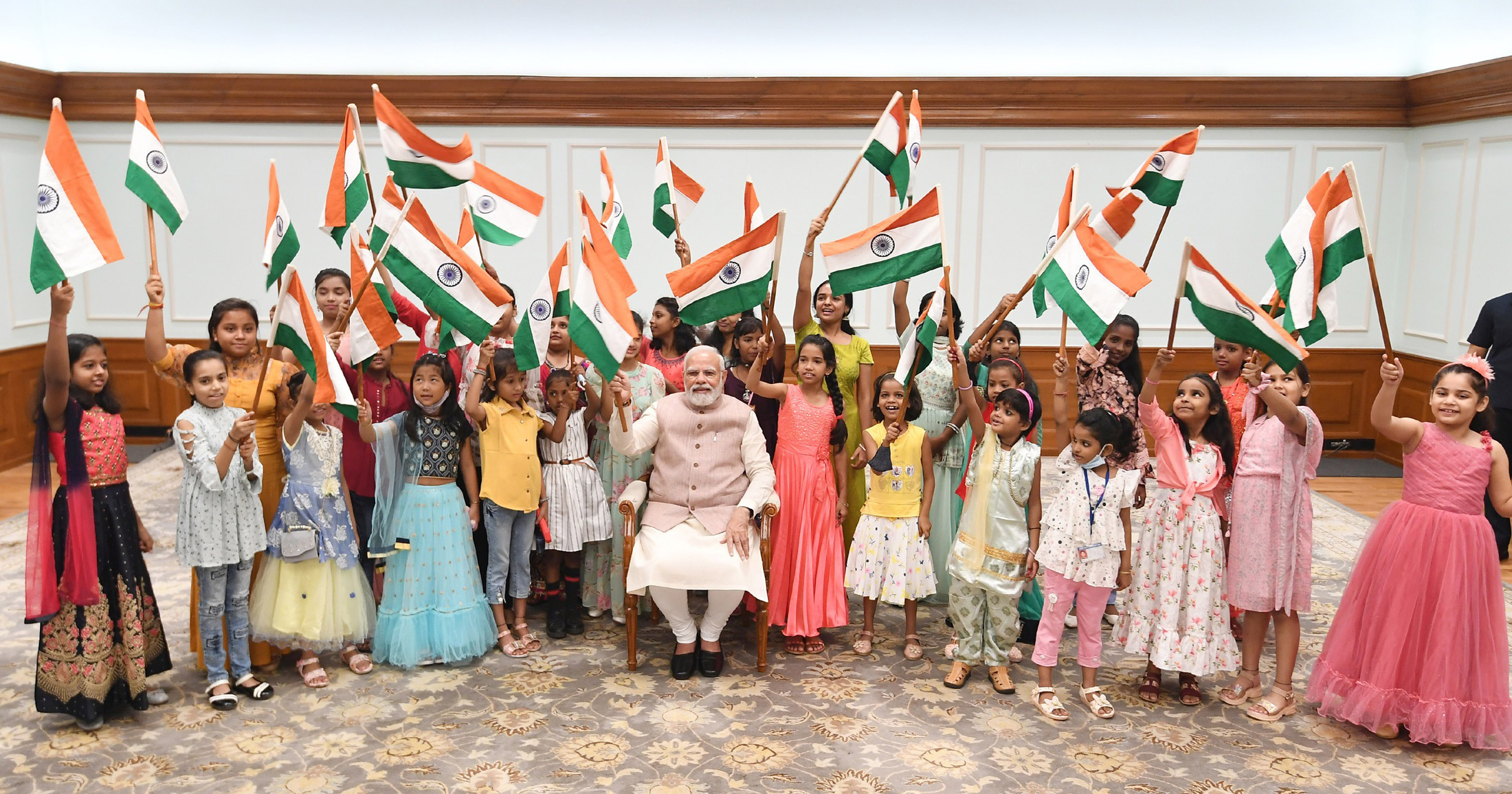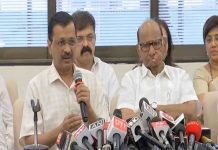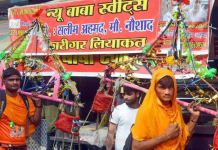
On Tiranga campaign, Congress needs to measure its moves and act like a responsible Opposition rather than appear desperate once the rug has been pulled from under its feet.
If there is one person who would be sitting smug today it is Naveen Jindal.
The one word that best describes Jindal is: Crusader.
Had he not fought for the right of every Indian to fly the tri-colour, this country and its people would have remained bereft of publicly expressing a sentiment: a sentiment of carrying the Indian flag through the streets of India; the pride of unfurling it on a rooftop and the joy of seeing it flutter atop one’s own home.
This is what Jindal did: he bridged the gap between rules and freedom; laws and sentiment and ensured that every Indian worth his salt has a right to the tri-colour and the freedom to fly it at will and call it one’s own.
Till Jindal did as it were, the tri-colour was kind of distant for every Indian. It was purely a government thing and not one that belonged to every Indian.
Jindal moved the Court to change that.
He fought two battles: legal and political and won both. Consequently, the Flag Code of India was amended not once but twice.
It all started with a government official directing that the flag fluttering in Jindal’s factory premises be pulled down.
Jindal, then all of twenty-two, was devastated: “Do I,” he asked himself, “need permission to fly my flag in my country? If yes, then this must change” he seemed to tell himself as he vowed to fight this anomaly.
The Flag Code of India then decreed that the national flag could be hoisted by the common man only for two days in a year: January 26 and August 15.
Jindal took legal recourse and finally clutched a landmark judgement of the Supreme Court which upheld the right of every citizen to fly the national flag. The decision led to the Central Government to amend the National Flag Code.
But that was only half the battle won. Jindal took up cudgels yet again and got the Flag Code amended to allow the flag to be flown at night too.
Following Jindal’s proposal, the Union Home Ministry gave the go-ahead for flying the national flag all through the day and night.
Today Time has come full circle. Jindal’s erstwhile battle is now a national campaign launched by the BJP government to showcase the tri-colour and its national importance.
Prime Minister Narendra Modi’s Har Ghar Tiranga, the tri-colour in every home, initiative is aimed at encouraging people to hoist the national flag on India’s 75th year of Independence.
Events involving the participation of people from all walks of life were planned to whip up national sentiment and show up the BJP as a Party which puts nation above all, the tri-colour being a symbol of this sentiment.
On its part, the Government has ensured that flags are easily available at all post offices throughout the country and state governments have tied up with stakeholders for uninterrupted supply of flags.
Inspiration being the key word, enthused crowds are visible across streets showcasing the tri-colour. The flag fever has gripped the nation and that too in good measure.
The move has resonated across the length and breadth of the country. It has resulted in a resurgence of the inherent patriotism of every Indian: a sentiment lying dormant for decades. Thanks to Modi’s initiative, today every Indian worth his salt is reaching out for the flag.
But if Modi does it, will the Opposition sit back? Expectedly, it raked up a controversy on a festive occasion where it is incumbent on every Indian to sink differences and collectively rejoice in the spirit of freedom.
The Congress launched a counter offensive through its My Tiranga My Pride campaign pitched against the BJP’s Har Ghar Tiranga. It also changed its display picture showcasing Jawaharlal Nehru holding the tri-colour.
Its leader Rahul Gandhi hit out at the RSS calling it anti-national on grounds that it did not hoist the national flag for 52 years.
The RSS traditionally hoists its own saffron flag or the bhagwa dhwaj rather than the tricolour. It was on January 26 this year that the tricolour was hoisted at its headquarters in Nagpur, after a gap of 52 years.
Rahul Gandhi may have scored a brownie point but indulging in a my flag versus yours banter is unbecoming of a leader of a national party.
It is true that the Congress has shrunk electorally but it still remains the only Opposition party with a pan-India footprint. Therefore, it needs to measure its moves and act like a responsible Opposition rather than appear desperate once the rug has been pulled from under its feet. On the Tiranga issue, the BJP has, for sure, done that.
The Congress woke up much too late to demonstrate its alleged love for the tri-colour. After all the Congress ruled the country for many decades and could have whipped up the fervour for the national flag: something which the BJP has done with aplomb.
Congress apart, other Opposition leaders including People’s Democratic Party chief Mehbooba Mufti put up the erstwhile state flag of Jammu and Kashmir as her display picture on social media. While doing so, she charged the BJP the government of robbing Kashmiris of their flag: the obvious reference being to the abrogation of Article 370.
The law that granted a separate flag to Jammu and Kashmir was revoked along with other special status laws by the Centre on August 5, 2019.
As things have panned out, politics has overtaken nationalism. The discourse is reduced to a level of seeing the flag as mine versus yours rather than ours.
Strong nations are bound by oneness. Therefore any divide or fissures in the national spirit is detrimental to the unity and integrity of a country. If the Opposition parties are treading that path, which they seem to as of now, it could be fraught with danger.
Whatever be Prime Minister Modi’s flaws or governance failures, one cannot deny that he has singlehandedly steered and stirred the people of this nation into believing that they belong to India and India belongs to them. The national flag may be just a symbol but it is one that the BJP has deftly used to its advantage.
That the Tiranga campaign is not purely emotion-driven is a given. Politics is in BJP’s DNA, therefore an electoral component is a must in whatever it sets out to do.
Having said that one must give credit where it is due: this time around at BJP’s doorstep for this innovative idea which while bringing people together also linked them through a strong emotion. Call it patriotism, nationalism or the thrill of simply holding and waving the tri-colour, the BJP has succeeded in creating a fervour rarely felt; it has made Indians sit up, have a sense of belonging and an affinity with the flag as never before.
Politically, the campaign has paled every other and showcased that nationalism is an integral part of BJP’s narrative. The social component was injected with people getting gainful employment with the demand for flags rising by the minute.
At the political level, it placed the Opposition in an also ran position. With BJP’s head-start all other campaigns were a poor copy be it Congress’s My Tiranga, My Pride or Aam Aadmi Party’s drive to distribute lakhs of flags across the country.
That the BJP is a past-master in strategy is a given. The Tiranga campaign may yet be another step in this direction but the way the BJP weaved in the political and social narrative in the garb of the national, one cannot help but concede that nobody does it better than the BJP.












